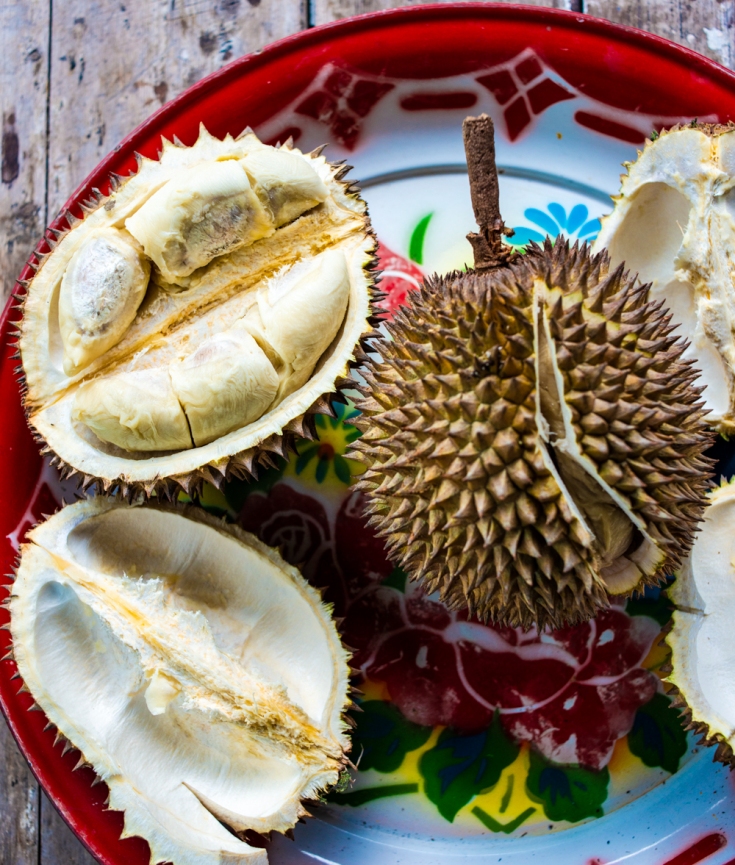For a long time, I fell out of love with durian.
The pungent-smelling spiky fruit used to be a favourite when I was younger. But the fondness was more to do with the childhood memories I had with my family in Perak.
My late Opah or grandmother used to have a durian orchard in the village. When the season arrived, the family members would brave the mosquito bites sleeping overnight in a hut to collect the falling fruits. Otherwise, the thieves – humans or animals – would get to them first.
It was a good excuse to rally around and make laborious desserts such as dodol or pulut durian (durian with sticky rice and coconut milk). The flesh could also be fermented to make tempoyak paste, a traditional condiment for freshwater fish dishes.
“My sister persevered with making the simple tempoyak paste every year. Just like my mother and grandmother did before her.”

In the past couple of decades, the durian became widely popular throughout Asia. The price soared ridiculously, and environmentally-damaging commercial land cultivations started to take over. It became the dreaded cash crop that made the news for the wrong reasons. I associated the fruit with greed and food fad. Eventually, I got put off eating it.
However, my sister persevered with making the simple tempoyak paste every year. Just like my mother and grandmother did before her. She doesn’t care about the negative durian news. She simply continues the family tradition that has been going on for centuries.
“It became the dreaded cash crop that made the news for the wrong reasons.”
Strange fruit
The charm of the durian is that they’re so weird-looking and inconvenient to eat.
They originated as a jungle delicacy from the rainforest of Malaysia and are difficult to farm. The trees are too tall and need to grow in shaded jungle areas. The exterior of the fruit is hard and spiky. The flesh inside is sweet like custard but exudes a pungent aroma that lingers in a room for a long time.

The best smelling durian fruits are those which fall naturally to the ground when ripe. The fruits exported for foreign consumption are usually cut from the trees and ripened in the storage, so the smell isn’t as strong.
But it’s still a good way to enjoy durian. The most authentic way to eat them is within the orchard ambience where they’re grown.
“The charm of the durian is that they’re so weird-looking and inconvenient to eat.”

Gold
Recently I had to travel back to look after my parents for a short time. We took a taxi from Penang airport to Perak. The driver turned out to be a durian farmer, ferrying tourists outside the harvest season.
He spent half of the journey talking about durian. According to him the season in Malaysia would start from the north in Penang, and then move southwards to Johor. It’s like the popular cherry blossoms season in Japan that begins from the north of the country too.
He related how travellers would journey from far and wide to his durian orchard at Balik Pulau to enjoy the harvest. Some came from as far as Singapore and China to experience eating durians under the trees.
That’s beautiful, I thought. His story made me change my mind about the durian. Good memories are worth their weight in gold. So, I might give the stinking fruit another try.
“Good memories are worth their weight in gold”.


